Finally the most waited season, ‘winter’ is here in India. I don’t know whether it’s early or late or whatever, all I know is it’s arrival is a good enough reason to make me happy. They say winter is an old monk but to me he is a colorful jolly boy. After all he brings Santa with him and loads of happiness in our lives. December always reminds me of Santa and Santa can’t be welcomed without Christmas Fruitcake.
Traditional Christmas fruitcake is very moist and delicate cake with mild spices and fully loaded with juicy dry fruits and nuts. In fact the core ingredients of this cake are different dried fruits with nuts & raisins. Flour & other ingredients are only used to bind these fruits together. The one and only trick is to keep the fruits moist and juicy before baking. For that fruits need to be soaked in alcohol (preferable brandy; rum. sherry also works well) properly for 1 month or upto a year. It is also very important to allow the cake to be matured by feeding the same alcohol which has been used to soak the fruits till Christmas.
This entire fruit soaking process and Christmas Fruit Cake/Pudding baking can be done in three ways. First only follow the traditional way; soak fruits before three months of Christmas (i.e. first/ second week of September) and bake the cake five weeks before Christmas (i.e. last week of November) and mature it by feeding alcohol once a week until Christmas. Secondly, soak fruits five weeks before Christmas (i.e. last week of November) and bake the cake just one week before Christmas (i.e. third week of December) and feed it with alcohol once only. The third one is the easiest way; soak fruits for overnight just three-four weeks before Christmas and on next day bake the cake, brush alcohol once a week until Christmas.
In these all three ways the soaked fruits need to be stirred once (at least) in two days though it is preferable to stir it daily. The reason is to prevent the upper layer of the fruits from drying out. While feeding the cake, few tiny holes are made on the top of the cake with thin small skewer and the alcohol is drizzled on the top. Then cake needs to be wrapped with two layers of clingfilm tightly and kept in any air tight container. During each time of feeding, the clingfilm is also need to be brushed with alcohol and wrapped again. This cake needs no refrigeration. It will be good at room temperature if kept in dry and dark place; without direct sun light. I personally prefer the second option for myself which is hassle-free and easier to handle. This year I soaked fruits on the third week of November.
Okay, it’s my fault; I agree. This post was sitting in the ‘draft’ section for more than two weeks with dozens of other recipes. Generally I click 100-150 shots for each post. After dumping them in HDD I have to face the most crucial task to finalize the shots and then I dump them in draft. And after few weeks I already start losing track for those shots. Finally after a good time when they come to my notice they seem to me not good enough to be published. And it’s becoming a (bad) habit for me these days. So before I change my mind and discard it like many others I did before I thought it is the time to publish it. I should have posted it once I was done with my fruit soaking. But in the juggling of life sometimes we all lose the track I feel. It’s always better to be late than never. What say?
Here is ‘How I soak Fruits for my Christmas Cake’ for aPerfect Traditional Rich Fruitcake or Christmas Pudding/Cake. You can adjust the amount of individual fruits, nuts or raisins but try to keep the entire amount intact. It will help to get similar texture and quality in the fruitcake while you bake. This amount will be sufficient for 8” round (deep pan) cake. And for the Christmas Cake recipe check here.
Preparation Time: 45-60 mins
Cooking Time: 00 mins
Resting Time: 3 months to 1 year
Total Time: N/A
Yield: 2 x 8” round (deep pan) cake
Watch detailed Video of Moong Dal Pakoda Recipe.
Read the entire recipe and Notes carefully before you start cooking. Do make sure all ingredients are at room temperature (unless mentioned) and weighed or measured correctly in appropriate weighing scale or measuring instruments such as cups or spoons. Remember these are not regular cups or spoons which is used in daily life.
Ingredients:
Fruits:
Apricot: 120g
Cranberry: 100g
Date: 180g
Fig: 50g
Glazed cherry: 100g
Prune: 100g
Raisins:
Sultana: 150g
Black current: 150g
Raisin: 100g
Nuts:
Almond: 50g
Cashew: 50g
Walnut: 50g
Other:
Brandy: 700ml (dark rum or sherry or whisky will do well though)
Orange zest of 1 large orange
Equipment:
Chopping board
Very sharp knife
Large glass bowl with lid or large glass jar with air-tight lid
Clingfilm
Wooden serving spoon/spatula
Preparation:
Make sure you work surface and your glass jar/bowls are clean and dry. There shouldn’t be any water at all. (See Tips)
Chop all the fruits and nuts in bite size pieces. It will increase the total amount of fruits present in your cake. That will also increase the variations in a single piece of cake. (See Tips)
Place the chopped fruits and nuts in the clean and dry glass container and pour the brandy (or alcohol of your choice) in it. Make sure fruits are completely covered with the liquid. (See Tips)
Stir gently with the wooden spoon and cover with the lid. The glass container should be air tight. (See Tips)
Place the container in a dry and dark place, may be in your kitchen cupboard. (See Tips)
Stir (or shake) the fruit mix with a wooden spatula/spoon on each day or at least on alternate day until the baking day. (See Tips)
Tips:
1. For soaking purpose only glass jar/bowls should be used as alcohol might react with other materials.
2. Generally I prefer to cut the sultanas and currents into halves and other fruits into quarters depending on their size.
3. Within one (or two) day the amount of alcohol will be reduced (depending on how dry your area is). Don’t panic; it’s natural because fruits will absorb the alcohol.
4. If you cover the open surface of the container with clingfilm tightly and then cover with the lid. It will ensure the container as air tight.
5. Make sure the fruit soaked container doesn’t get direct sunlight at all.
6. It is preferable to stir/shake the soaked fruits to keep them moist evenly. Otherwise the uncovered fruits will dry up. Add ¼ cup more brandy (or the alcohol you are using) at a time into the mixture, if needed.
Have you soaked your fruits yet?

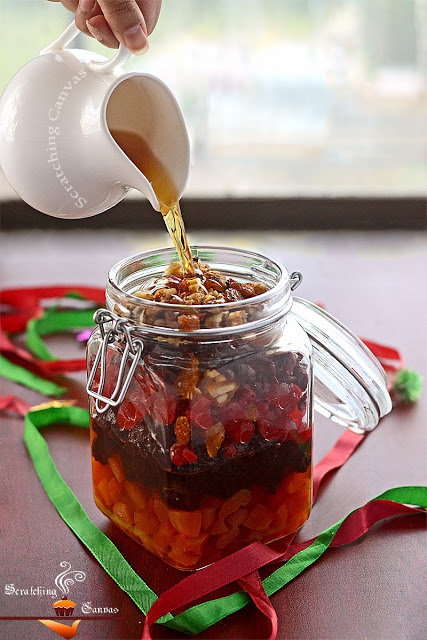
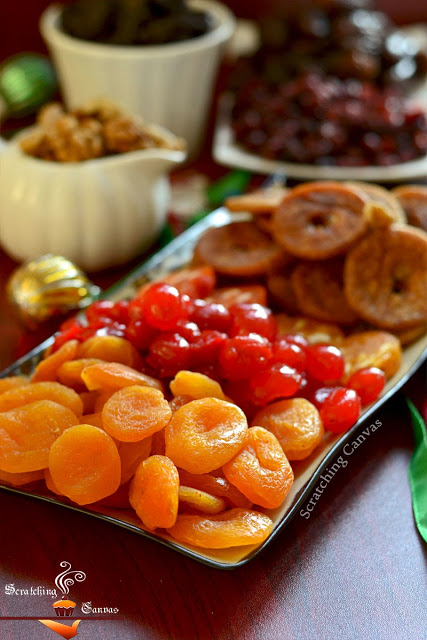
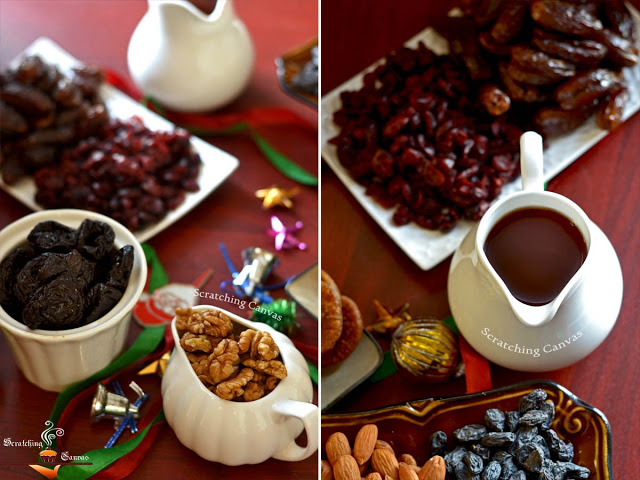
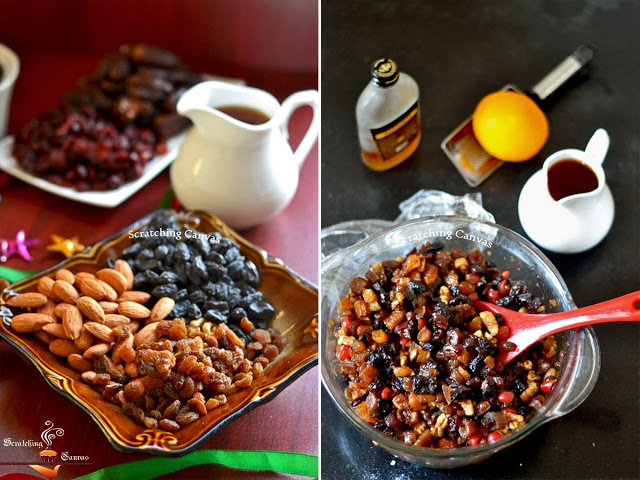
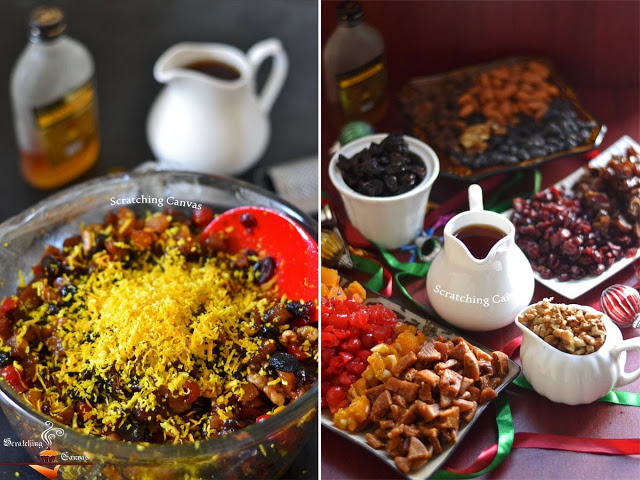
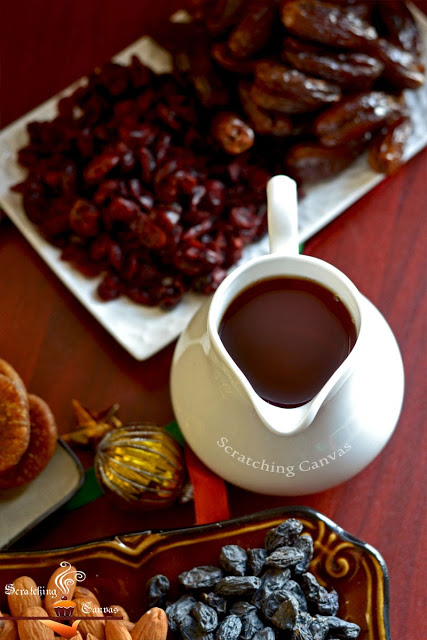
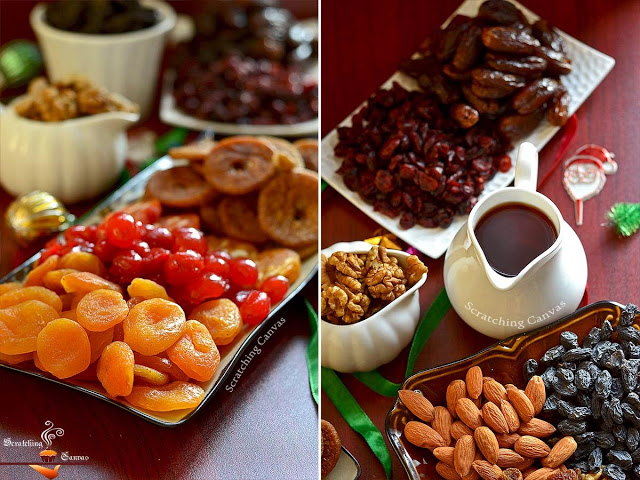
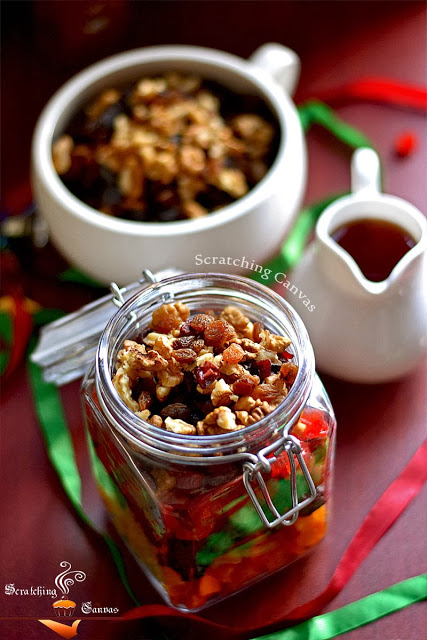
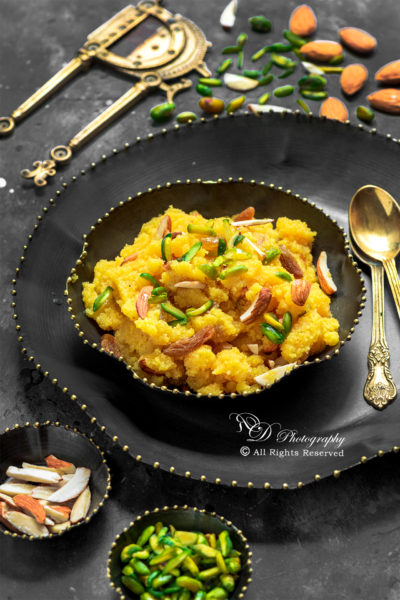

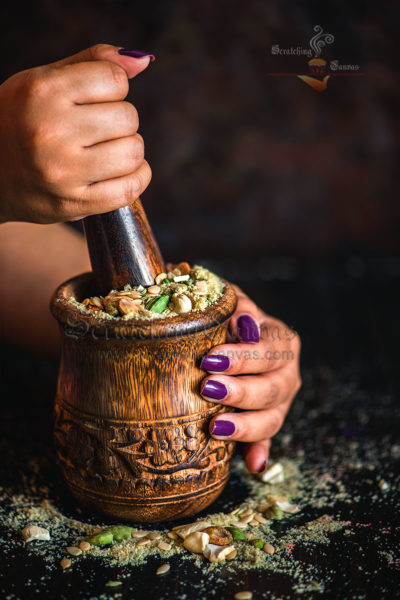
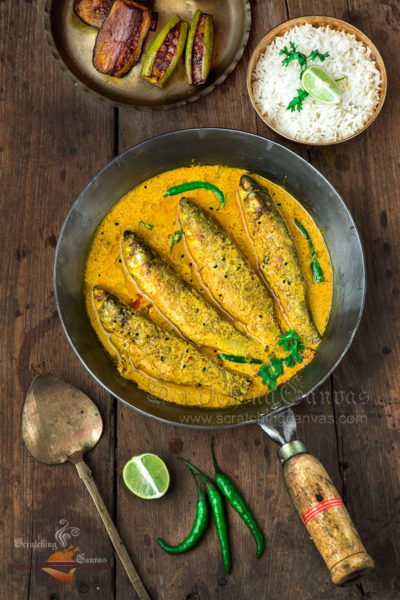
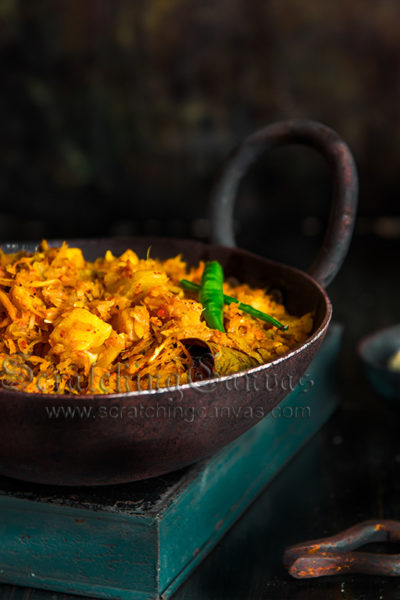
Very helpful tips. I was almost running out of time soaking my fruits. As Christmas is 4 weeks away.
I found your blog while searching for advice on how to soak fruits. I usually buy a big bag of pre-soaked fruits but they're out of stock so this has been very helpful, especially your last minute option. Thanks. Really glad I found your blog.
Thank you for the helpful tips. Very thorough and informative.
Wow i like this website, It was really very informative for me. Decorative dry-fruits looks more delicious and everybody want to eat. Thanks for sharing..it was too helpful for me.
Great tips, thank you. And you don't need to use horrid cling film that leeches nasties into the fruit. Just wrap with plain lunchwrap and drizzle with alcohol, then wrap with two or three layers of old-fashioned greased lunch paper. Then put in a tin. Much easier to unwrap to add extra alcohol during the weeks before Christmas, and much nicer for the environment.